
When you open Strange 66, take a look beyond the all-American sheen to the seedy, creepy, and just plain weird stories behind America’s Mother Road.
Route 66 conjures images of an innocent golden age of car travel: shiny V8s powering down hot, two-lane blacktop, sucking 20-cent-a-gallon gasoline, and periodically depositing their occupants at mom-n-pop greasy spoons, neon-lit motels, and tourist traps. But America’s Mother Road wasn’t all about ruddy-cheeked, summer vacationers. Route 66 and the regions it traverses have a side more seldom seen, rich with weird tales (mimetic architecture, paranormal phenomena, and even cryptozoology) to the downright sordid and seedy (murder, mistreatment, and other assorted mayhem).
In Strange 66, bestselling Route 66 authority Michael Witzel explores the flip side of Route 66 to offer details on infamous Route 66 locations that once served as hideouts for the James Gang (Meramec Caverns), Bonnie and Clyde (Baxter Springs, Kansas), and Al Capone (Cicero, Illinois).
There are the stories of unspeakable crimes committed along 66, such as the Stafflebeck “murder bordello” in Galena, Kansas, and Ariziona’s “Orphan Maker of Route 66.” Witzel also explores the people that passed through the region, including the Dust Bowl exodus and the Trail of Tears tribute in Jerome, Missouri.
Then there are the lighter, though still strange stories, such as the Route 66 Great Transcontinental Footrace and the origins of various roadside colossi, like the Blue Whale of Catoosa and Giganticus Headicus in Walapai, Arizona. And speaking of heads, what about steak? Eat one as big as your head at the Big Texan in Amarillo—and it’s free!
All of these stories culminate in a look at Route 66 unlike any other, completely illustrated with modern and archival photography and written by an acknowledged authority on the Mother Road.
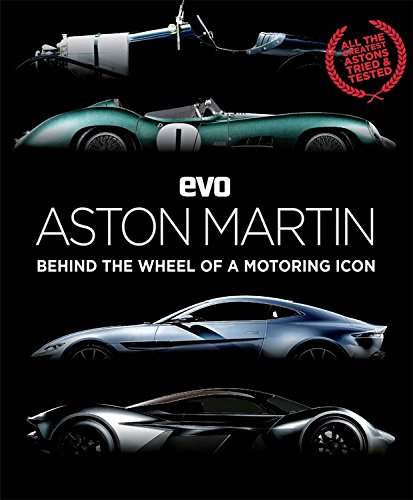
For more than 100 years, Aston Martin has created some of the most beautiful – and powerful – cars ever seen on road and track. Here, the experts at evo magazine look back at its glorious history, with first-hand, behind-the-wheel reports, technical information and performance stats. With features on 60 of the greatest Astons of all time, accompanied by jaw-dropping photography from the world-renowned evo photographers, this book is a stunning tribute to this iconic motoring brand.
A special feature explores the stories behind the famous James Bond cars, from Goldfinger DB5 to Spectre DB10. Discover what it’s really like to drive the most valuable Bond car of all time, and learn what became of these cars once filming had finished. evo: Aston Martin is a roll call of motoring excellence – with every single one tried and tested – and is a must-have for all car enthusaists.

Drag racing is a very regulated sport. In the history of the NHRA, IHRA, and other sanctioning bodies, many classes existed in an effort to make sure the cars racing against each other are as equal as possible. It is a noble, if not futile, pursuit. You have two cars facing off that have very similar statistics in terms of weight, transmission type, fuel type, estimated horsepower, and all other sorts of measurables. The byproduct is that often the races that were “fair” were not the races that the fans wanted to see.
During the golden age of drag racing, fans didn’t care as much about class racing as much as they wanted to see scores settled, rivalries battled, and interesting match-ups. There were the manufacturer rivalries, Ford versus Chevy, Chevy versus Mopar, Mopar versus Ford, as well as numerous driver rivalries. Match races were also a great way to feature wildly popular cars that no longer had a class in which to compete, yet the fans still wanted to see them. So popular and intense were these races that many track promoters didn’t bother to promote class racing at all. Instead, they used the match races as headliners, similar to the marquee at your local arena or a billboard in Las Vegas, all resulting in putting more fans in the stands. And the drivers loved it too. Although the prize money for national events was fairly average for the day, the extra appearance fees and prize money to lure the most popular match racers to events increased the driver’s take exponentially. Many of the most popular pro drivers quit class racing altogether just to go match racing.
Veteran drag race author Doug Boyce tells the tale of the history of match racing through the cars, the drivers, the events, the classes, the rivalries, and everything else that was fun about match racing during the golden era. It’s all here, complemented by wonderful vintage photography provided by fans and professionals in attendance. If you are a fan of any class of drag racing, from any era, Match Race Mayhem is a fun addition to your racing library.

Step aboard the floating cities that patrol international waters, launch aircraft from their decks, and decide the fate of war. Behold the king of naval warfare: the aircraft carrier.
Soon after the Wright Brothers’ historic flight in 1903, officials explored the airplane’s military applications. The seaplane and the flying boat were conceived to combine air and naval operations, but their potential proved limited. Aircraft that could operate from the deck of a ship, however, offered tremendous possibilities. A few visionaries seized the opportunity, and by mid-century the aircraft carrier eclipsed the battleship as the preeminent weapon of naval warfare.
Since the first successful launch of an airplane from the deck of a naval ship in 1910, “fighting flattops” have evolved into immense, nuclear-powered vessels–floating cities capable of launching dozens of aircraft performing a variety of missions, including attack, escort, antisubmarine patrol, and deterrence. This illustrated history covers that evolution, from the first tentative steps taken by naval aviators before World War I to the roles these massive ships have played in the War on Terror. While author Michael Haskew focuses on US Navy carriers, he also provides coverage of parallel and competing carrier developments overseas. In addition to explaining the technologies behind past and present carriers and their aircraft, Haskew reexamines major engagements involving carriers, especially the epic Pacific battles of World War II, as well as personalities who were central to carrier development and deployment and naval doctrine relating to carriers.
Filled with carefully curated period photography and modern images showing aircraft carriers throughout the decades, Aircraft Carriers is a celebration of naval warfare’s most important innovation.
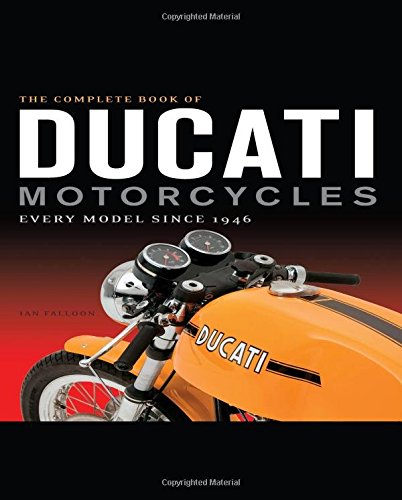
Legendary Ducati motorcycles have something of a rags-to-riches story. This Italian motorcycle manufacturer began by selling motorized bicycles to impoverished residents of post-World War II Italy. Today, Ducati is the world’s premier manufacturer of street motorcycles whose sales continue to rise year after year. Its svelte, hyper-accelerating motorcycles are two-wheeled wonders that are fluent in the language of speed.
The Complete Book of Ducati Motorcycles traces the stunning chronology of the motorcycles dreamed up by Ducati, from the 1950s to present day. Laid out for the first time in encyclopedia form with gorgeous photography and insights from Ducati expert Ian Falloon, this book offers motorcycle enthusiasts a closer look at the craftsmanship, power, and beauty of these extraordinary motorcycles. The book features all of the motorcycles from Ducati’s storied history, including the groundbreaking Desmodromic 750 Super Sport, the Mike Hailwood Replica, the Superbike-dominating 916, and the epic Panigale.
From the street bikes that gave birth to the very notion of the modern superbike to the racing motorcycles that dominated tracks in Great Britain, Europe, and North America since the latter part of the twentieth century, The Complete Book of Ducati Motorcycles runs the full gamut of sportbikes. It’s a collection that demands shelf space in the library of any true motorcycle collector or fan.

A fully illustrated history of the Land Rover 101 One-Tonne – the forward-control military vehicle developed as a gun tractor for the British Army, in production from 1975-1978. Including specification guides, production histories and original photography, Land Rover Military One-Tonne is an essential guide to these small yet powerful 4 x 4 vehicles
Design and prototypes – from 6-cylinder to V8 and the abandoned powered-axle trailers
The 101 in British military service between 1975 and 1998, including home and overseas deployments
The 101 variants – ambulances, Rapier tractors, hard-bodied versions for electronic warfare and special field conversions
Sales to overseas military authorities
Advice on buying and owning a 101 today
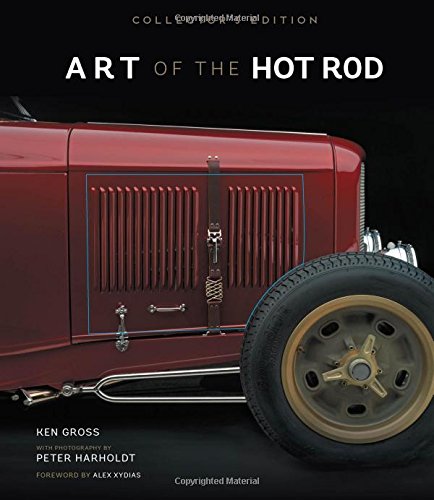
SOLD OUT
Art of the Hot Rod is a feast for the eyes–a gallery of gorgeous hot rods, the best you’ll see from the world’s top hot rod builders!
A hot rod is art on wheels, and this book contains a whole gallery of the best you’ll ever see. In this exclusive collector’s edition of Art of the Hot Rod you’ll find a jaw-dropping array of beautiful hot rod photos, plus special gatefolds, updated text, and exclusive frameable photographic prints.
Art of the Hot Rod: Collector’s Edition celebrates the uniquely American marriage of mechanical know-how and an inspired sense of style and design. Built from the ground up, pieced together from salvaged or hand-built parts, rebuilt with classic looks and modern technology–these automotive works of art are as powerful on the page as they are on the street. The book profiles top builders such as Pete Chapouris, Roy Brizio, Vern Tardel, Troy Trepanier, and fifteen others and features studio portraits of their most outstanding custom creations. Through the stunning portraiture of master photographer Peter Harholdt, Art of the Hot Rod captures these magnificent vehicles as they’ve never been seen before. In addition to full-color photography and updated text, this special collector’s edition features two gatefolds with new photography and four garage art photo prints.
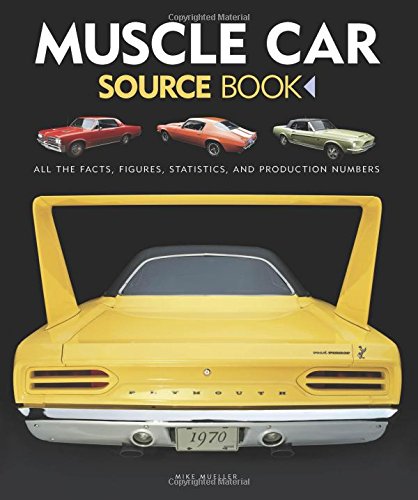
SOLD OUT
From 1963 to 1974, muscle cars were the kings of the road–no other American automobiles have ever inspired as much passion as these classic performance cars.
Muscle Car Source Book is a one-stop resource for muscle car fans. Heavily illustrated with vivid color photography of all the muscle cars from the classic era (1963-1974) and chock full of data and historical facts, this is a reference book you will not want to put down! All of the manufacturers–Ford, Chevrolet, Pontiac, Buick AMC, Dodge, and Plymouth–are covered, and so are the cars, including the Camaro, Mustang, Charger, GTO, and many more!
Statistics: All the performance data available for each car is presented in easily read tables.
Specifications: Detailed specifications, including horsepower and torque ratings, curb weight, fuel capacity, stock wheel and tire sizes, and other key technical data unique to each model is given.
Production numbers: Production information is broken down across all the performance variants and major features.
Options: Major performance options available for each car including engine options, comfort features, gauge packages, and wheel-and-tire options are all outlined.
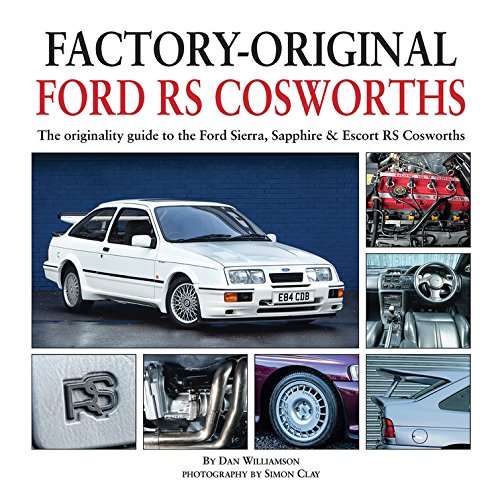
The originality guide to the Ford Sierra, Sapphire & Escort RS Cosworths
When Ford teamed up with Cosworth Engineering to breathe life onto its humdrum Sierra, few knew it would be the birth of a motoring legend. Through circuit racing and supercar-humbling on-road ability, the 1985 Sierra RS Cosworth quickly became a household name.
A practical four-seater boasting 204bhp from its two-liter turbocharged power plant, the RS Cosworth’s massive performance was equaled only by an extroverted rear wing designed for high-speed stability
.
While motorsport machines scooped innumerable victories and increasingly powerful engines, in 1987 Ford homologated a yet-more-spectacular Sierra – the 224bhp RS500. It instantly became a desirable collector’s piece.
The restrained four-door Sierra Sapphire RS Cosworth of 1988 was Ford’s vision of a 150mph executive express; two years later, its four-wheel-drive successor returned the firm to rallying. By 1992, Ford had squeezed the 4×4’s running gear into a shorter Escort body, complete with 227bhp engine and ever-more-aggressive aerodynamic aids.
The limited-edition Monte Carlo came in 1994, followed by the final RS Cosworth – a revised Escort with smaller turbocharger and user-friendly appeal. Production ceased in 1996. Today, each model has a loyal following among motorsport fans and fast Fords enthusiasts. And as the cars become increasingly sought-after, so too does the pursuit of perfection.
This book examines RS Cosworth authenticity, outlining standard specifications alongside in-depth color photography of outstanding examples of the breed. From body panels and trim to turbochargers and tires; from interior fabrics and paint schemes to shock absorbers and stickers, Ford’s factory-original fitments are covered in comprehensive detail.

Continuing his classic series on Ford Motor Company Michael Parris gives us the inside stories of Ford during the total performance sixties. This decade brought us the Falcon, the Mustang, Shelby Cobras and motorsports wins from Indy and NASCAR to Trans Am and LeMans. Nothing was beyond the grasp of Henry Ford II and his great company. Style and auto racing were playing an important role in Fords growth. Henry still called the shots, Iacocca brought on the Mustang and Carroll Shelby gave Ford the international respect in racing it sought. Henry wanted to buy, but Ferrari wasnt selling. So he turned Shelby loose with his Cobras and then the GT40s. And LeMans belonged to Ford. And in NASCAR, drivers like Fireball Roberts, Freddie Lorenzen and Cale Yarborough were lighting the southern speedways on fire.
But Ford during the sixties was about more than just auto racing. The company had stylish, hot-selling models like Falcon and Mustang. Profits were big and money was being spent on beautiful body designs, high-performance engines and new muscle cars. When the horsepower challenge came from GM, Ford was ready. Fairlane and Mustang GT models came charging off the assembly line by the thousands and they all had thunder under their hoods. Engines ranging from the semi-hemi 429, high-rise 427 and Boss 302 were facing off with GTO on every street in America.
Fords of the Sixties is full of beautiful photography and inside stories from the men that brought Ford its design and performance success throughout the decade. Stories never before heard are drawn from first-hand interviews and in depth research from the archives of Ford Motor Company Archives, Henry Ford Museum and the Detroit Library National Automotive Collection. If you want the inside story of Ford this all-color classic is a must for your library.
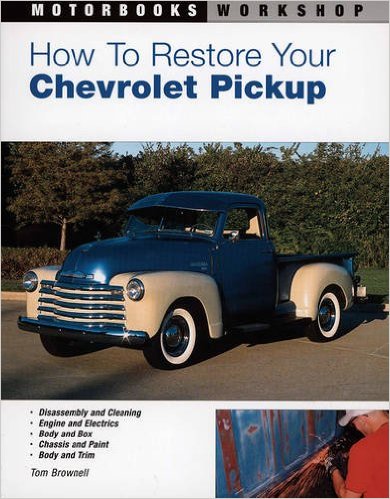
A new edition of one of our more popular how-to titles, incorporating an attractive design, significantly updated text, and full-color photography. This is a step-by-step restoration guide for all Chevy light-duty trucks from 1928 onwards.Updates include:- Upgrading to power steering- Pressure oiling for “Stovebolt” six and electronic fuel injection upgrades- New information on disc brakes and power brakes.
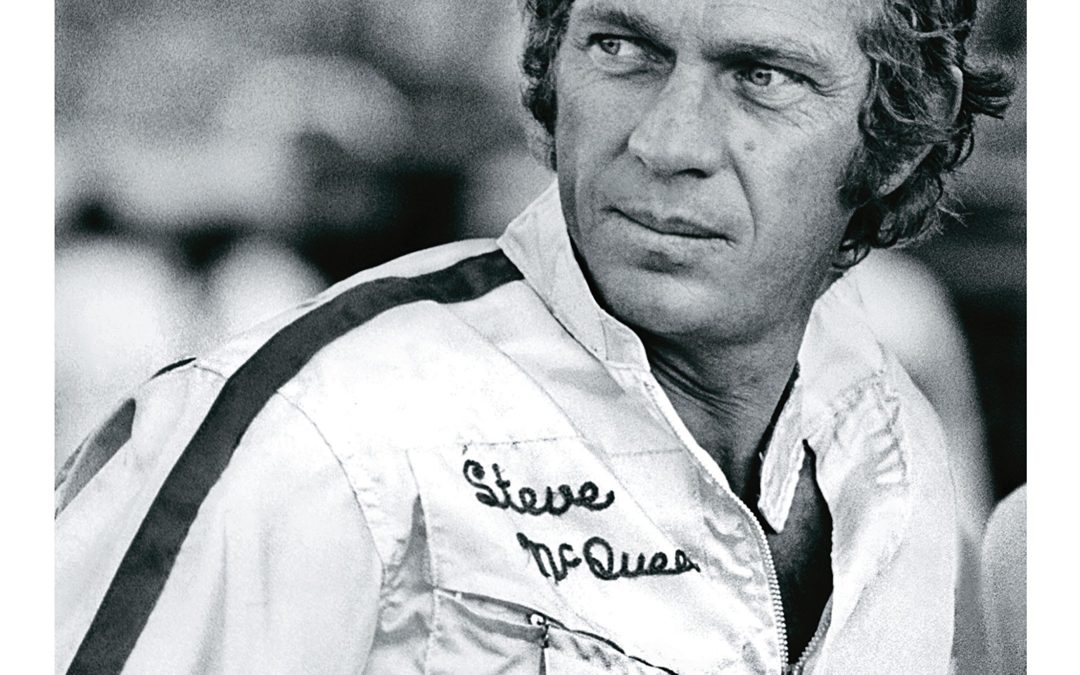
Even 30 years after his death, Steve McQueen remains an icon of cool. His image continues to appear in advertising and pop culture, and car, motorcycle, and racing fans embrace him as one of their own. Now comes this volume featuring rare photography and chronicling McQueen’s fascination with and passion for all things internal-combustion powered.
McQueen’s movie characters always had a great motorcycle or car—from the 650cc “BMW” motorcycle (a disguised Triumph) in The Great Escape (1963) to the Gulf Porsche 917 race car he raced in Le Mans (1971).
His need for speed propelled him from Hollywood into a number of top off-road motorcycle races, including the Baja 1000, Mint 400, and Elsinore Grand Prix. Determined to be ahead of the pack, McQueen trained vigorously, weight lifting, running, and studying martial arts.
Steve McQueen A Passion for Speed reflects a life lived in the moment and with the pedal to the metal.
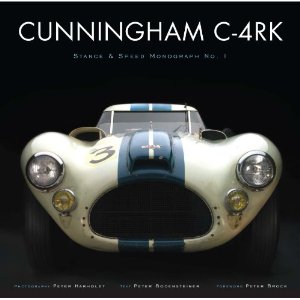
A decade before Carroll Shelby took his Cobras to Europe, Briggs Cunningham brought American horsepower and know-how to the 24 Hours of LeMans, where he challenged the supremacy of the great European marques on their home soil. The C-4RK was a one-of-one streamlined coupe-a LeMans special of sorts-designed with input from one of the most famous automotive aerodynamicists of all time, Dr. Wunibald Kamm. Did the C-4RK live up to the promise embodied in its aggressive bodywork? Pick up this first installment of the Stance & Speed Monograph Series to find out… The Stance & Speed Monograph Series is for people who like cars, period. Each book in the Monograph Series examines one significant automobile and the incredible history that surrounds it. We’ll be covering a wide variety of cars, from road racers, to dragsters, to hot rods, to one-off coachbuilt masterpieces, to land speed record cars and more, introducing new books at regular intervals. As you add each new release to your collection you’ll create a shelf full of fascinating automobiles to which you can return again and again. Photography by Peter Harholdt. Text by Peter Bodensteiner. Featuring an insightful foreword by Peter Brock, designer of the Shelby Daytona Coupe.
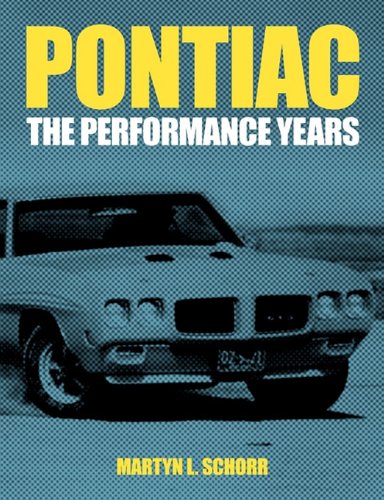
Pontiac: The Performance Years represents a compilation of the best of three volumes covering the peak years of musclecar performance. The books were first published as part of the Quicksilver Supercar Series in the early 1980s. Out of print for decades, original editions of the books are coveted by collectors and rarely come up for sale. Not content to let collectors have all the fun, we’ve brought them back to provide a unique window into musclecar history. Pontiac is the brand that brought us the GTO in 1964 and created a whole new market segment: Supercars. First an option in 1964-1965 and then a full model line in 1966, the GTO was the first of the Supercar genre and was supported by incredibly creative marketing programs, in-your-face advertising, and almost endless option lists. Today we call vintage GTOs and competitive mid-size models with high-profile trim and large displacement, high-horsepower engines “musclecars.” Back then, though, it was the Supercar Sixties, and Pontiac started it all! Pontiac: The Performance Years is packed with a treasure trove of period photography and information from Pontiac engineering, specialty marketers like Royal Pontiac (Bobcat), and factory and private racecar builders.
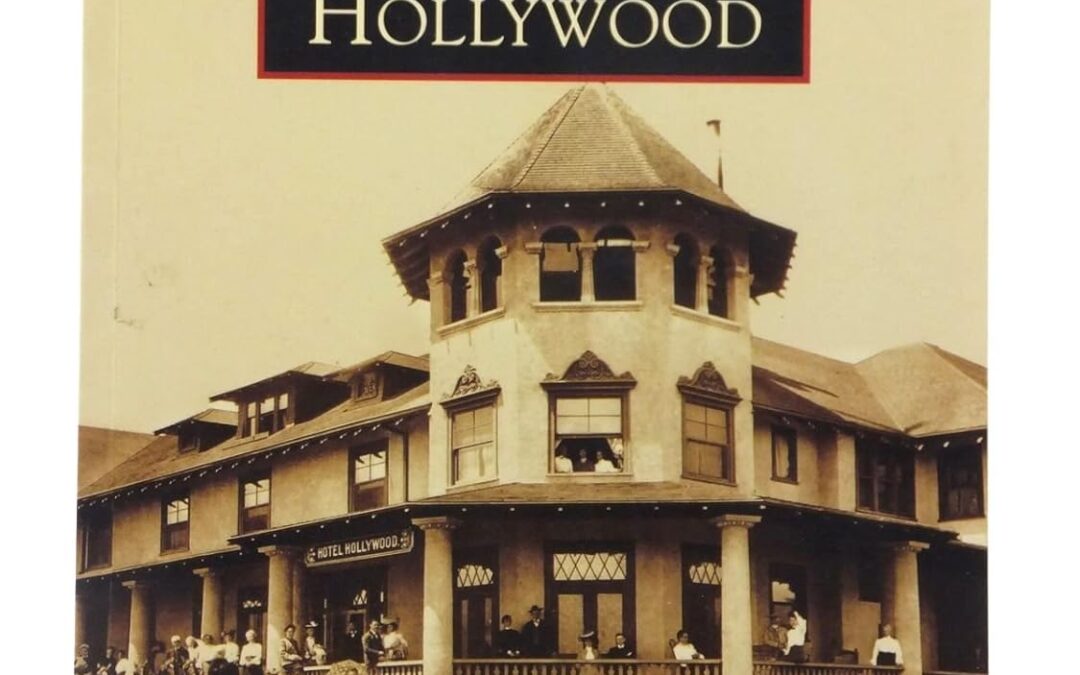
The image of Hollywood often translates as some otherworldly dreamscape filled with fantastic lives and fantasy fulfillment. The real deal was carved from the Southern California desert as an outpost northwest of Los Angeles. The movie industry arrived when tumbleweeds were not simply props and actual horsepower pulled the loads. Everyday workers, civic management, and Main Street conventionalities nurtured Hollywood’s growth, as did a balmy climate that facilitated outdoor photography and shooting schedules for filmmakers. Splendid vintage photographs from the renowned collections of the Hollywood Heritage Museum and Bison Archives illustrate Hollywood’s businesses, homes, and residents during the silent-film era and immediately after, as the Great Depression led up to World War II. These images celebrate Hollywood before and after its annexation into the city of Los Angeles in 1910 and its subsequent ascension as the world’s greatest filmmaking center.
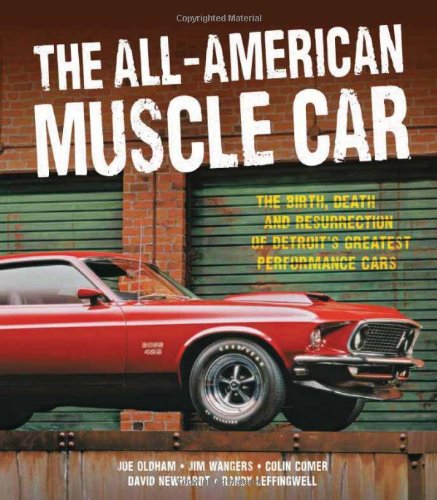
The birth of the muscle car, mid-sized cars with big engines making big horsepower, marked not only a revolution in performance—but also a revolution in marketing. For the first time ever, car manufacturers tailored their product to a youth audience. The genre thrived in the 60s and early 70s and was reborn in the 21st century. The All-American Muscle Car celebrates the fifty-year history of the breed through stunning modern and archival photography, and brilliant essays from today’s top muscle-car writers. Organized by themes, its chapters cover the introduction and early years of muscle; the cultural trends that made muscle cars so wildly popular; the pop culture that surrounded the cars in music, film, and television; and racing, both legal and illegal. Great rivalries are detailed—Camaro versus Mustang versus Firebird versus Challenger versus ‘Cuda, GTO versus Road Runner versus Super Bee versus Chevelle SS versus Buick Gran Sport versus Oldsmobile 4-4-2, and the like. The book also explores the illogical extremes at the end of the classic era, the Plymouth Superbirds, GTOJudges, LS6 Chevelles, Hemi ‘Cudas, W-30 Oldsmobiles, Ram Air IV Pontiacs, Stage I GSX Buicks, and 440/6 Road Runners; the dark years and the death of performance; the rebirth of the muscle car; and the modern interpretations of the breed including the new Camaro, Mustang, and Challenger.
Hard Cover
1st Edition
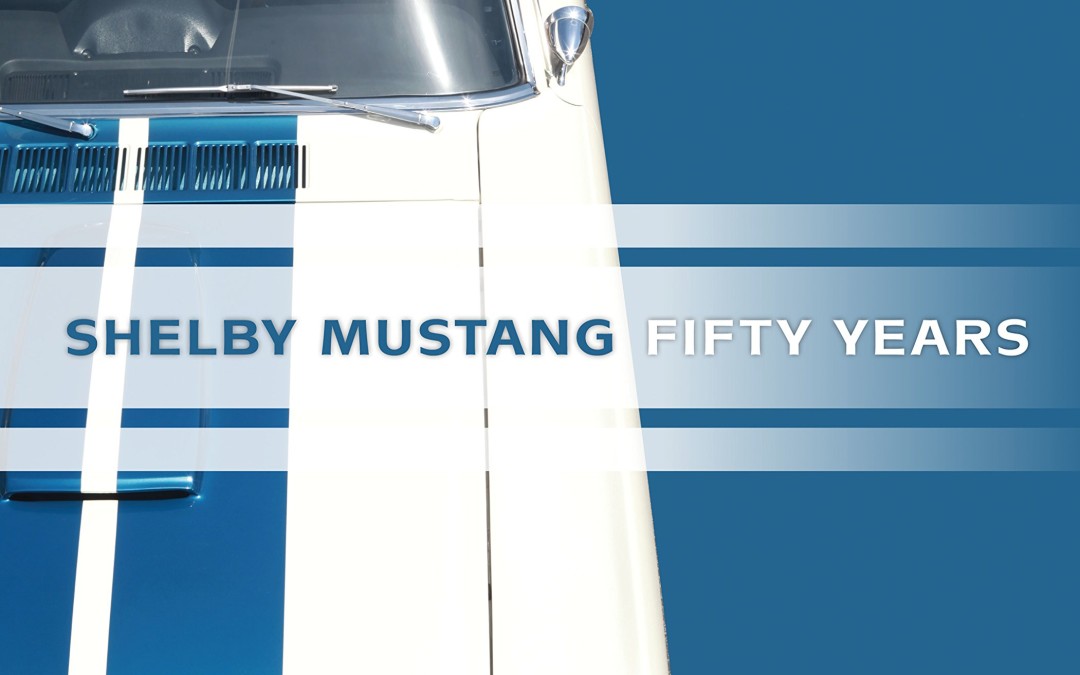
SOLD OUT
Celebrate the 50th Anniversary of America’s premier performance car!
From the original Shelby Mustang GT350 to today’s 1,000 horsepower GT500, Carroll Shelby, Shelby American, and the Ford Motor Company have defined high-performance with their Shelby Mustangs. Shelby built his Mustangs from 1965 until 1970, at a time when it seemed that the muscle car was a dying breed. Then an odd thing happened: people began to realize the classic nature of the car almost as soon as Shelby stopped building them. After a much-too-long hiatus, in 2006 Carroll Shelby was back with Ford and production of new Shelby Mustangs began for the first time in 36 years. Today, Shelby Mustangs of all eras remain at the top of almost every gearhead’s list and with good reason-they are America’s premier do-it-all pony car.
Shelby Mustang Fifty Years is a celebration of these magnificent machines and covers every iteration from the raw 1965 GT350s to today’s Shelby 1000 monster and the men that made it all happen. Created in cooperation with the Carroll Hall Shelby Trust and officially licensed by Carroll Shelby Licensing, Inc., Shelby Mustang Fifty Years is lavishly illustrated with rare, historic photography and modern color images to chronicle the story of these amazing cars, from the initial collaboration with Ford to today’s record-setting high-tech muscle cars.
The foreword and tribute to Carroll Shelby by the “Father of the Mustang” Lee Iacocca rounds out this love note to America’s premier performance car. No Mustang fan will want to miss it.
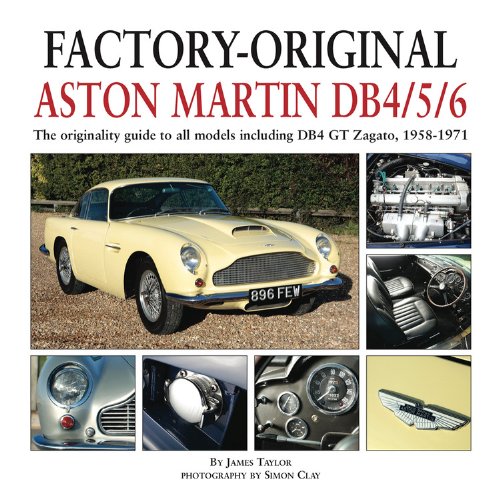
This family of fast, alluring and supremely elegant cars first appeared in 1958 in the form of the 240bhp 140mph DB4. The response from the motoring press and the motoring public was rapturous, though the price of this handbuilt supercar was beyond the reach of all but a favoured few. The coupe was soon joined by a 266bhp Vantage version, by the 302bhp short-chassis DB4 GT(only 75 produced) and by a convertible. The DB4 GT Zagato, most powerful of all at 314bhp, is also the rarest, only 19 examples being made. The 1964 replacement for the DB4 was the DB5, again offered as coupe or convertible, with standard 282bhp engine or the 314bhp Vantage unit, and the line concluded with the 1965-70 DB6, with cut-off tail, better aerodynamics and in Vantage form having 325bhp. All these cars remain as special and as exclusive as they ever were, and they command correspondingly high prices based on three factors â?? condition, history and most of all originality. Here James Taylor gives full details of correct original specification and equipment for all these cars, backed up by in-depth colour photography of outstanding examples of all models and variants. Body panels, external trim and badging, paint colours, interior trim, dashboard, instruments and controls, under-bonnet components, engine and transmission, lamps, and other features right down to the tool kit, are all covered.
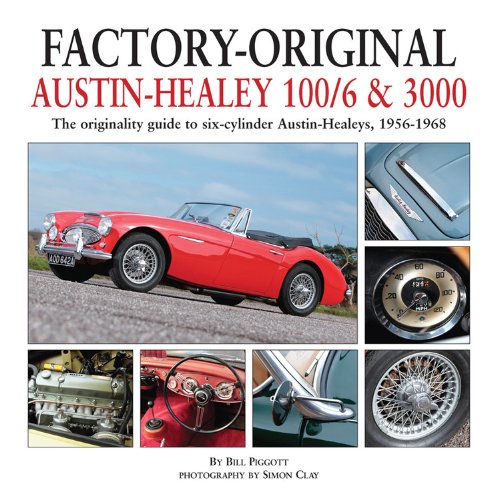
The four-cylinder Austin-Healey 100 sports car had already made a big name for itself by the time the 2.6-litre six-cylinder 100/6 arrived in 1956. This came as a 2+2 seater, joined in 1958 by a two-seat version, and both were replaced by the more powerful 3000 model in 1959, again offered as a two-seater or 2+2, and available with disc brakes. The Mk II 3000, launched in 1961, could be had either as the limited-production 132bhp two-seater with triple carburettors and side screens, or as the less spartan 2+2 convertible with wind-up windows, and the final version was the 2+2-only1964 Mk III, now with 150bhp, a wooden dash and better appointments. All these “Big Healeys” are as much admired today as when they were new, and here marque expert Bill Piggott gives full details of correct specification and equipment for all these cars, backed up by in-depth colour photography of outstanding examples of all models and variants. Body panels, external trim and badging, paint colours, interior trim, dashboard, instruments and controls, under-bonnet components, engine and transmission, lamps, and other features right down to the tool kit, are all covered.
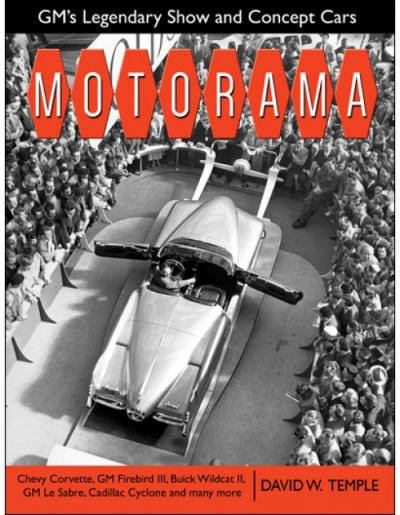
In an age of unbridled American enthusiasm and towering industrial might, the GM Motorama was a dazzling and elegant show that was unlike any automotive event before it or since. General Motors staged extravagant and elaborate Motorama shows that rivaled some fashion shows. It showcased some of the most revolutionary and innovative prototype and dream cars ever built. And it captured the imagination of the car-buying public from 1950 to 1961.
Motorama expert and experienced author David Temple has comprehensively researched the show, the cars, and the personalities to create a fascinating new story with many new photos of these magnificent cars. Because television was in its infancy, GM’s President Alfred Sloan believed that the Motorama was the most effective way to market GM products and design prowess. Legendary stylist Harley Earl led a talented group of designers and engineers to dream up, style, and develop some of the most remarkable prototype cars of all time. While current production Buick, Chevy, Cadillac, and Pontiac cars were showcased, the bold, radical, awe-inspiring prototype and dream cars stole the show. These included the GM Le Sabre, replete with aerospace design and an aluminum engine; the fiberglass-bodied Corvette dream car, which went into production after overwhelmingly positive response; and the jet engine-powered Firebird. Temple goes into fascinating detail on the body, frame, engine, drivetrain, and all the special features of each model. He has also retraced the ownership histories of some of these cars.
Within the pages of this volume, you get to relive this glorious era of automotive history and revisit the advanced show cars that inspired so many new models. This book features fascinating period photography of Motorama cars at the show, in development, and at different locales. No other automotive show rivaled the Motorama for stunning productions and awe-inspiring cars, which makes this a must-have book.






















